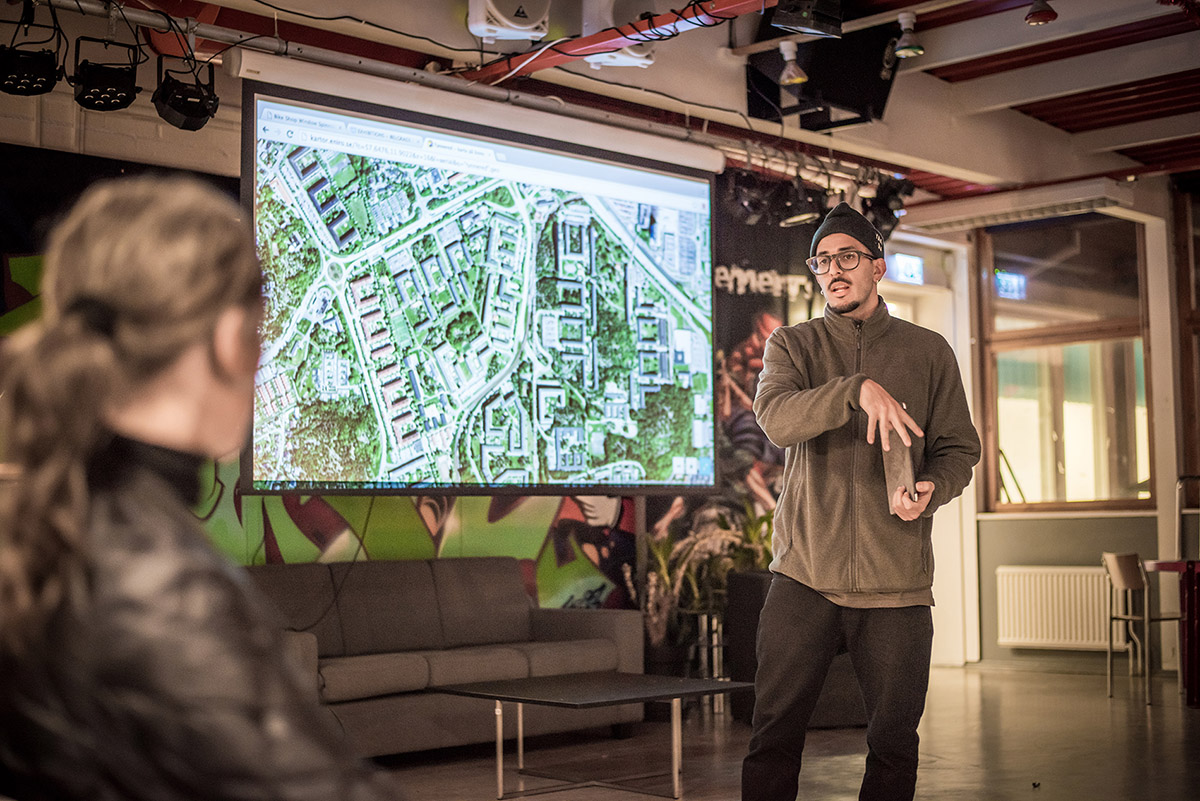The artistic vision of a project can be summarised briefly or extensively. Whatever the case, it is advisable to formulate the ideas into an art programme. A good art programme can create a solid framework for the art project, strengthen its place in a planning or building process and help develop the promoter’s original idea. This regardless of whether the art project was initiated by a public body or by an artist, curator, citizen, public servant or a politician.


The crucial aspect of the quality of an art programme – and consequently of the future art project – is that it is developed by a curator, an artist or by an art professional. If such a person is not available in one’s organisation, a reference group including members with artistic expertise may provide support.
An Art Programme
The art programme defines the framework for the art project. It is a written supporting document that will guide the entire project. It contains all the facts that have to be taken into consideration, and it describes the vision for the commission.
A good art programme functions as a solid support for the creative process, in which the artists, adhering to the framework of the programme, can freely develop the art project in terms of content, expression, media, technique, materials, choice of sites and formats. The art programme can be formulated as a letter of intent by the project’s parties who are represented in the advisory group. Then the art programme can be used as the foundation for developing other texts, such as advertisements for the open call, sketch invitations and a competition programme. The art programme can also be used as the foundation or guide for the artist or artists involved in the project. Thus, the art programme may be regarded as a living document.
What Is an Art Programme?
The most important aspect of the art programme is to present an overall artistic vision for the artistic intervention, and proposing possible sites for the art and clarify the practical conditions for working with art in the building. This should be developed in consultation with the commissioner of the project and representatives of the users of the building. This will ensure that it is possible to adopt a comprehensive artistic approach to the building’s architecture, the surrounding city, those who will be affected by the building and those who will use it.
The art programme analyses and addresses the financial, technical, social and cultural-historical possibilities and restrictions for the artistic intervention and takes into consideration future management and maintenance. The art programme also maps existing art on the site.
Analysis of the Conditions of Art
The development of the art programme begins with a comprehensive analysis of the conditions of the artistic intervention, carried out by the art project manager/curator, in consultation with the project’s advisory group. What is the nature of the site or the building? Who lives there? Who will spend time there? Has history left any traces in people’s memories, in the buildings and the landscape? What is the project’s budget? What is the timetable? Which restrictions apply? Which experts does the advisory group comprise? And so on. The analysis may reveal that the conditions are not sufficient for motivating an artistic intervention, although it does not happen often. Most of the time, the conditions are good for proceeding with the work.
The Overall Artistic Vision
If the outcome of the analysis is that the conditions for initiating an artistic intervention are satisfactory, the art project manager/curator, on the basis of the analysis, will propose how to proceed, and enumerate the most important aspects to consider on the site, at the time and based on the conditions. This is a critical phase in which artistic and curatorial expertise is crucial for a high-quality execution of the project. Artists and curators are resources specially trained in thinking critically and open-mindedly, which are important qualities when it comes to addressing explicit or tacit needs, and identifying further possibilities for the project.
Artistic Formats and Types of Procurement
The art programme’s overall vision may include one or more possible themes for the artistic intervention, identified by the art project manager/curator in consultation with the advisory group. The art programme can also propose sites for the artistic intervention, or ask the artist to propose themes and sites for their artwork. The art programme also suggests guidance for the types of artistic formats that may be relevant for the project: a permanent artwork, a temporary artistic intervention, or both. The art programme may also discuss possible ways of procuring artists as well as which types of artistic practices may be relevant for the project.
The Content of an Art Programme
An art programme should clearly describe:
- Background
- Objective
- Timetable
- Budget
- Allocation of responsibility between the art project manager/curator, the advisory group, the artist and the owner/commissioner of the project
- The site (existing and future buildings and landscapes)
- The context (mapping and analysing existing or lacking social and cultural values, in addition to challenges and topical issues identified by the art project manager/curator)
- Other specific requirements (e.g. technical drawings, specific safety requirements, play safety requirements, etc.)
The art programme may also be more detailed by drawing attention to:
- The thematic focus
- Permanent art
- Temporary art
- Physical or immaterial art
- Art in which a collaboration with residents and civil society is of central concern
- Artistic collaborations